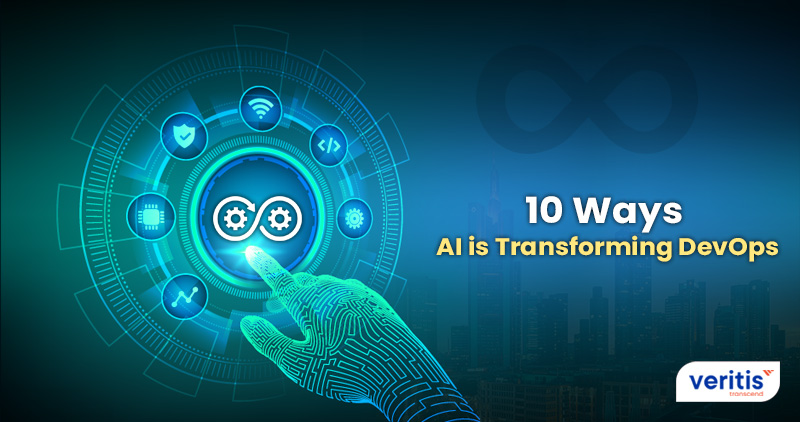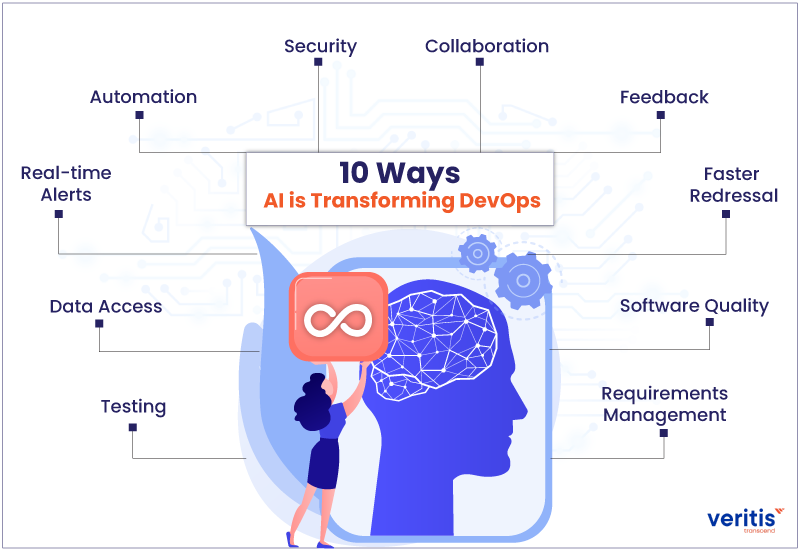
The need for speed in the IT world is increasing by the day. Software development that took months earlier is being executed in weeks by collaborating distributed teams using DevOps methodologies.
Since ‘DevOps’ entered our digital lexicon, IT organizations worldwide have leaped to this methodology for good reasons. DevOps dramatically improved software development efficiency, speed, and quality by breaking down the traditional barrier between development and IT operations teams.
Now for the B-side: Despite gaining universal acknowledgment, the road to DevOps adoption has remained bumpy. Why? Many challenges, from skill sparsity to a multifarious toolset, plague the DevOps methodology.
The goal of DevOps is 100% automation across the software development lifecycle (SDLC) remains elusive. Moreover, the patchy adoption of DevOps has created a two-paced digital landscape, with some enterprises having witnessed some degree of success in DevOps adoption. In contrast, others struggle with integrating DevOps into overall business processes.
Artificial Intelligence (AI) is an elixir to these challenges. AI can remarkably impact DevOps by reducing operational complexities due to the toolsets’ high niche and distributed nature.
- AIOps platforms are projected to grow from USD 11.7B in 2023 to USD 32.4B by 2028 at a 22.7 percent CAGR, signaling sustained enterprise demand for automated detection, diagnosis, and remediation.
- Organizations investing in mature observability report materially lower downtime and outage costs, with studies showing strong ROI as practices mature.
- Platform engineering improves developer productivity over time, but can cause a temporary performance dip during rollout, so governance and user-centered design matter.
- Progressive delivery with feature flags reduces deployment risk by rolling out changes gradually and enabling rapid rollback.
10 Ways AI is Transforming DevOps
By streamlining and accelerating every phase of the software development lifecycle, AI takes DevOps to a new level of accuracy, quality, and reliability. Without further ado, let’s dwell upon the ten ways AI is transforming DevOps methodology:

1) Intelligent Test Automation
AI expands unit, integration, and end to end testing, so coverage grows without slowing delivery. It learns from code changes and past defects to generate missing tests and remove flaky ones. Teams see fewer escaped defects and faster releases while improving DORA change failure rate.
2) AI Code Review and Quality Gates
AI reviews pull requests for insecure or low quality patterns and enforces policy as code. Recommendations arrive in plain language with specific fixes. Lead time for changes drops, and production code quality improves.
3) Change Risk Prediction in CI CD
Every commit receives a risk score inside an AI powered CI CD pipeline. High risk changes move through canary or blue green paths with feature flags for safe rollback while low risk changes ship quickly. Deployment frequency rises without sacrificing reliability.
4) AIOps Alert Correlation and Prioritization
AIOps platforms turn noisy alerts into a single, clear incident with probable root cause. AI correlates logs, metrics, and traces and suggests the next best action. Teams acknowledge faster and reduce MTTR while strengthening SLO adherence.
5) Autonomous Incident Response and Remediation
For known failure modes, AI executes safe, audited actions with humans in the loop. Common steps include restart, rescale, cache warm up, and feature flag rollback. Recovery time decreases from hours to minutes, and incident recurrence rates fall.
Also Read: AI-Powered, ML-Driven – The New DevOps Trend!
6) Predictive Capacity and FinOps Optimization
AI forecasts demand and right sizes infrastructure while watching unit economics. Cost anomalies are flagged by service and tied to performance targets so savings never erode user experience. The result is a lower cost per transaction with steady SLO compliance.
7) DevSecOps With AI and Software Supply Chain Security
Security operates across the pipeline without friction. AI ranks vulnerabilities by exploitability and blast radius, scans SBOMs and containers, and confirms fixes inside CI CD. Mean time to remediate improves, and critical exposures are reduced over time.
8) Unified Data Access and Knowledge Search
AI connects repos, tickets, pipelines, and observability, enabling teams to answer who changed what and why in seconds. Postmortems and planning rely on evidence rather than guesswork. Cycle time by stage shortens, and handoff delays fade.
9) AI Assisted Platform Engineering and Self Service
Golden paths and service templates become guided self service with conversational help and guardrails. New services inherit security, reliability, and cost controls on day one. Time to first deploy drops and support tickets decline as adoption grows.
10) Requirements and Feedback Intelligence
AI summarizes product feedback, usage telemetry, and incidents and links them to backlog priorities. Roadmaps reflect real demand and measurable outcomes. Lead time from idea to value improves and customer reported issues fall.
In conclusion
AI has already transformed the way IT organizations do business. Now, it has forayed into the field of DevOps to unleash its full potential by making SDLC more intelligent, improving team velocity, and eliminating human errors. With the infusion of AI, DevOps teams can realize the benefits of self-learning autonomous systems in every phase of the DevOps development cycle.